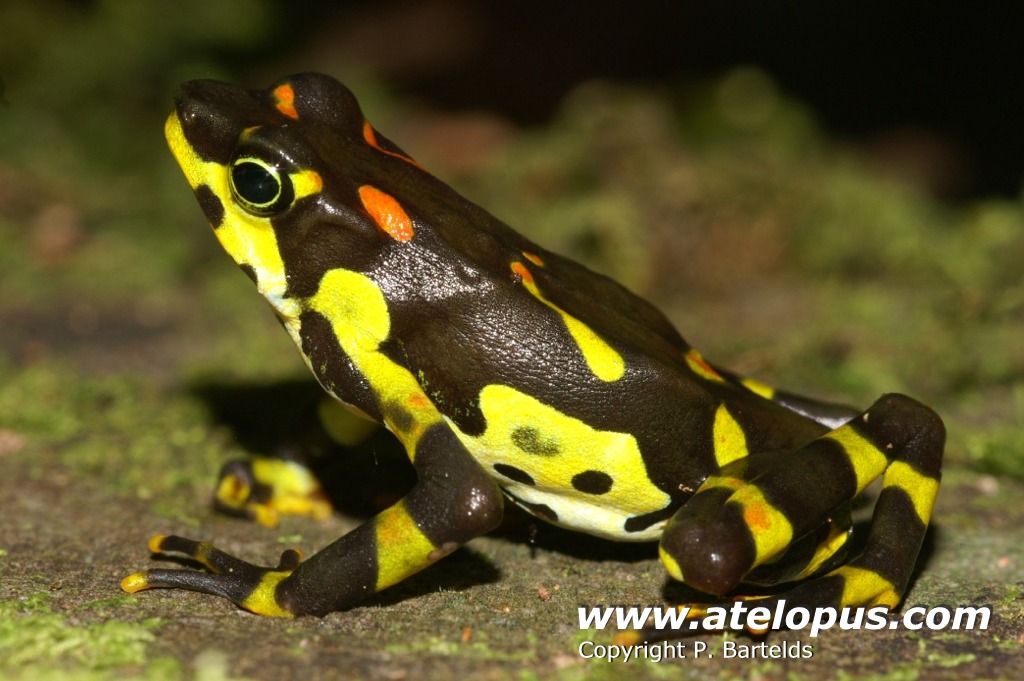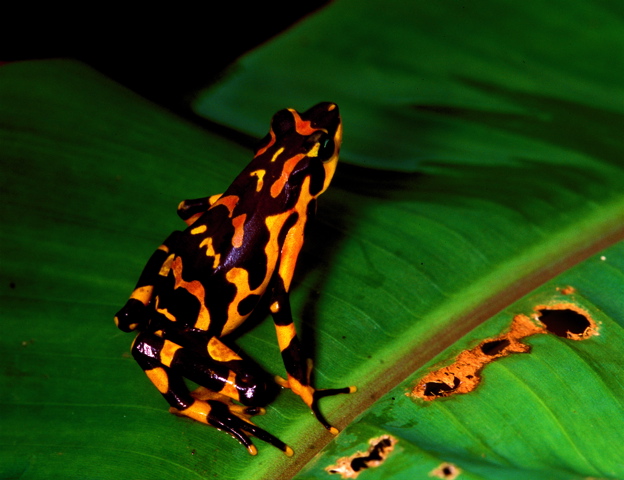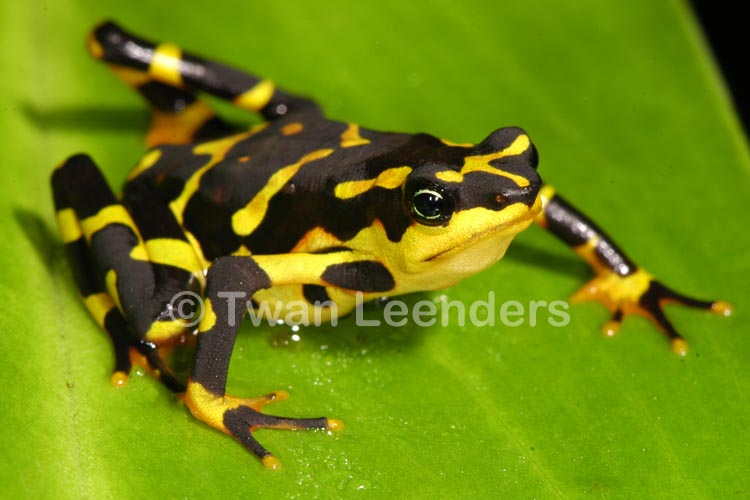Atelopus varius
Atelopus varius
Atelopus varius is an endangered Central American amphibian species from the family of toads ( Bufonidae ).
Features
The body of Atelopus varius is slender and up to 52 millimeters long. The skin is completely smooth. The body top is black with a red, yellow or green drawing. This usually consists of irregular, rarely symmetrical spots and transverse and longitudinal bands. In some animals, the back is gray with yellow, black framed napkins, furthermore there is also the variant brownish olive color with dark speckles and dots. The underside is yellow or pink and black points, more or less numerous spots on.
The head is as long as wide. In the males, the trunk is 2 to 2 1/3 times as long as the head, with the females 2 1/2 to 2 2/ 3 times. The front head from jumping, is somewhat pointed and falls vertically from the side. The nostril is much closer to the front end of the head as on the eye. The diameter of the nostril corresponds to the distance between the eye and nostril. In females, the interorbital space is much wider than the upper eyelid, in the males it is only slightly or not wider. The front legs are the length of the body or a little longer. Although the first finger is short, he is still clearly visible. The other fingers are moderately long and as well as the short toes webbed almost completely interconnected. Subarticularhöcker are not present on the fingers and toes. The Metacarpalhöcker are extremely hard to make out and Metatarsalhöcker missing entirely.
Occurrence
The distribution area of Atelopus varius includes Costa Rica and western Panama. The species is found on both the Pacific and on the Atlantic side of the Cordillera at altitudes of 2000 meters. In a few places in the lowlands it rises on remote ridges and hills up to 16 meters above sea level down. In the lowlands of the Pacific Northwest Atelopus varius does not occur, continued to receive reports from Colombia are false. From Costa Rica, the species is currently found only at a single site in Fila chonta near the town of Quepos due to the collapse of the population.
Habitat and behavior
The terrestrial living species inhabits mainly humid lowland and mountain forests. In the lowland rain forest found copies of all came in mountainous areas in front with rocky and steep rivers. The typical Atelopus varius for habitat are slow flowing rivers where the species was often found sitting along the banks and on rocks in the water.
The animals sleep at night in crevices or low vegetation. Eggs are laid in the water and possibly attached to rocks.
Population and risk
Formerly Atelopus varius was known in Costa Rica very common and of more than 100 populations. From 1988, a dramatic decline in stocks began to be the kind held in 1996 in Costa Rica eradicated. In 2003, a single population was discovered in the area of the Pacific coast near the town of Quepos, with a renewed investigation of 2005, more than 2003 individuals have been identified there. In contrast, in Panama remained some populations stable while others declined. Overall, the populations of the species have declined sharply throughout the range. Probably the main reason is the chytridiomycosis, which brought down the populations of other species of Atelopus. The cause of this disease, the chytrid fungus ( Batrachochytrium dendrobatidis ), was detected in specimens of Atelopus varius from museums and from the last population of Costa Rica. Other threats include loss of habitat due to the destruction of natural forests as well as predation by introduced trout. In the 1970s, the animals were sold by the thousands as pets to Germany. The location of the population in Costa Rica is also at risk due to a possible landslide, which the entire area which demonstrated the kind could destroy.
Atelopus varius is in the IUCN Red List as " threatened with extinction " because of the extreme stock dips ( Critically Endangered ) classified.









